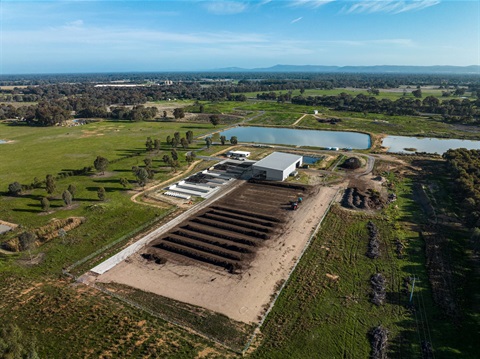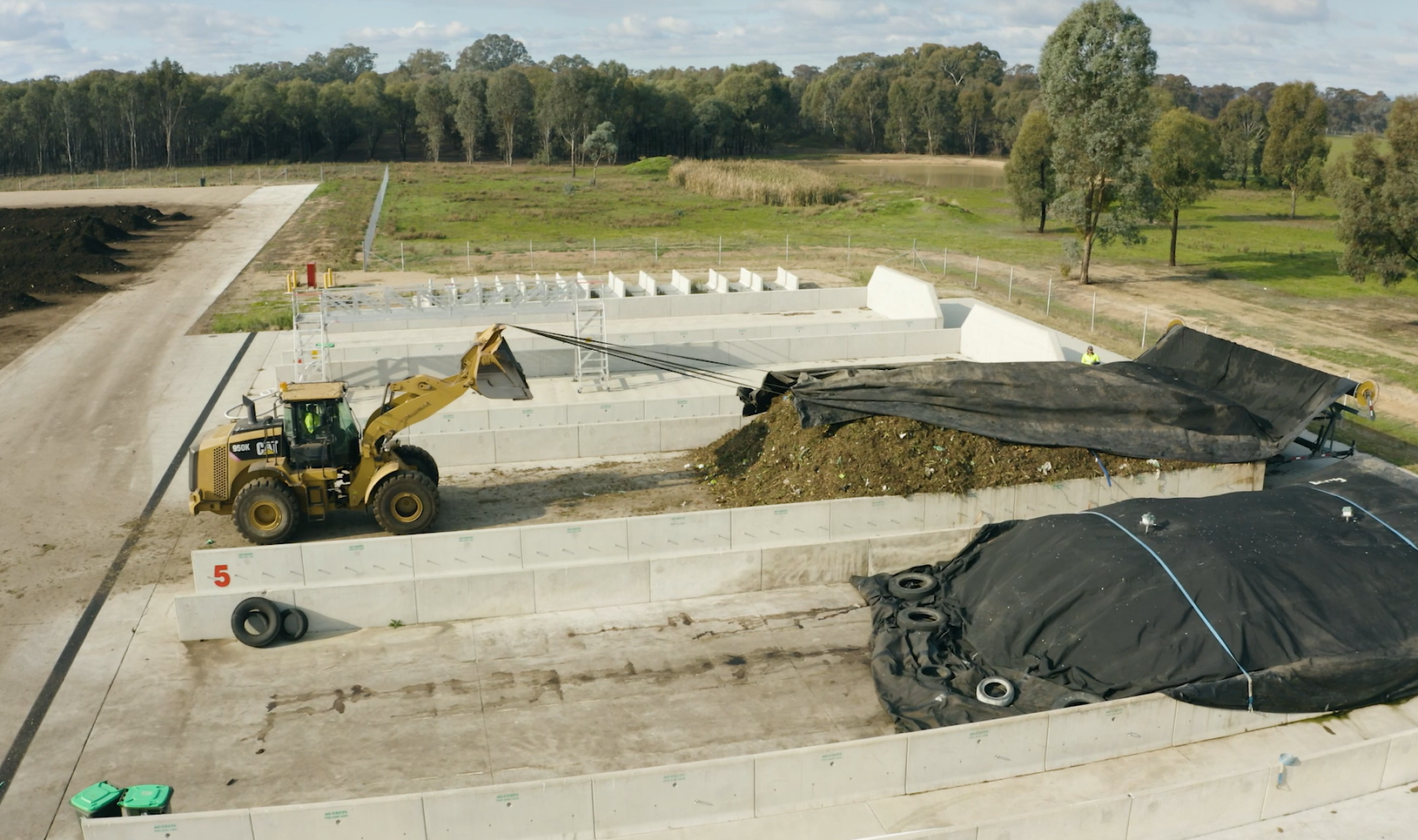Wangaratta’s Organics Processing Facility

About the Wangaratta Organics Processing Facility
Did you know that all the green lidded bins containing Food Organics, Garden Organics (FOGO) get sent to Wangaratta's Organic's Processing Facility where it goes through a process that transforms it into compost?
Wangaratta's state of the art Organic's Processing Facility uses "Aerated Static Pile Composting" technology, the first of its type in Australia and the only Council run facility in Victoria.
A key component is the specially designed ‘composting covers’ which are placed over the organic's material in the pasteurization phase. This process reduces Volatile Organic Compound emissions.
The Wangaratta Organics Facility has a design capacity of 12,000 tonnes and is currently processing approximately 6000 tonnes per annum.

History
A review of Council’s Waste Management Strategy in 2013 identified the community’s desire to be waste free by 2030. The issue of green waste entering limited landfill space and generating methane emissions as it rotted required an innovation. A dedicated aerated compost facility provided an excellent solution. Wangaratta Council is demonstrating leadership in transitioning to a circular economy.
Benefits
The composting program provides social, environmental, and economic benefits.
- An estimated 39 percent of food and garden waste is getting diverted from landfill. This will extend the life of the landfill for a number of years which generates cost savings and environmental benefits.
- Composting FOGO instead of sending it to landfill reduces green-house emissions by approximately 135 tonnes per annum. This equates to keeping 679 fuel powered vehicles off the road for 1 year.
- Expansion of the collection and processing capacity will further increase diversion rates.
- Compost will be used on RCoW parks and gardens.
What goes into your green bin?
